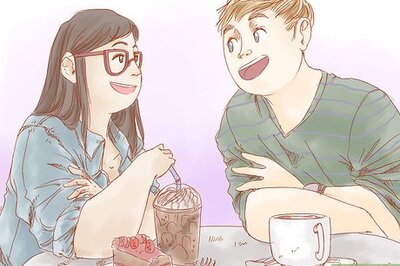
views
KOCHI: Any would-be couple would perhaps dream of getting married in the Anglo-Indian style after witnessing the grandeur of their wedding. A long wait to know more about the community ended when we became a part of an Anglo-Indian wedding. Warmth and affection is what flows when you get acquainted with them. Brimming with energy, they’re all about dance, music, wine and good living.The marriage is marked with pomp and splendour. The bride and groom in their western attires of shimmering gowns, suits and frocks, the well-adorned dance halls, sumptuous food, all make it truly an affair to remember. Once the rituals and ceremonies are over, the brides maid and best-men accompany the newly weds. Then it’s time for cake and wine during which the couples are introduced to the crowd. In the ‘grand march’ dance which follows, young and the old couples alike join in. The ball dancing brings the bride and groom together. The dances that follow include Fox Trot and Jive. The couple is the centre of attraction, surrounded by others. Flower girls and ring bearers add charm to the occasion.“In our community, we do not have a ‘thali or mantrakodi’, instead we exchange gold rings,” says an Anglo-Indian residing in Fort Kochi. “The colour of the bride’s gown is white as it is a symbol for virginity. Another tradition is that cake and wine served during the wedding are always made by the ladies at home,” says Cheryl from Edakochi. After this, it’s party time.The multi-course dinner, comprising a variety of meats and breads, awaits the party who have grown extremely hungry after the dancing session. The wedding feast has traditional dishes like vindaloo (beef or pork), fish moli, cutlets and grilled piglet to name a few.Silver Jubilee celebrations are also occasions which Anglo-Indians celebrate with grandeur. “Husband and wife once again take the same vows. The only difference is that our children organise it,” says Mark Anthony who successfully completed his 25 years of married life. On the occasion, the couples exchange silver ring instead of gold.Fort Kochi is the hub of the community, and it feels like a world in itself. Houses here have an aesthetic European touch. On vising some Anglo-Indian homes, we couldn’t help feeling that this is a very conscientious community, very proud of their past and traditions. “My house is 156 years old and I have not changed anything of the old setting,” said I S D’ Costa, retd IRS who explained in detail about the Ango-Indian social life over the years. His own house is a treasure of antiques. The furniture, fan, dressing table all have an old worldly charm to them. We spotted a 1956 winding clock which still gives the actual time. “We are a lot who preserve things and still use them. The tea table and sofa I use is my mother’s,” says Cheryl. Before the British came, their spoken languages were Portuguese and French, after which their mother tongue became English.“During the British time, it was always easier for us to find employment in the railways, telegraphs and customs because of the advantage we had with the language,” says D’Costa. Most Anglo-Indians have always felt more English than Indian since earlier days. But their liberal, warm nature makes them popular with the others. “We are a community who believe that everyone is equal and are friendly with the Malayalis. The Indian society also absorbed us because of that,” adds Costa.
















Comments
0 comment